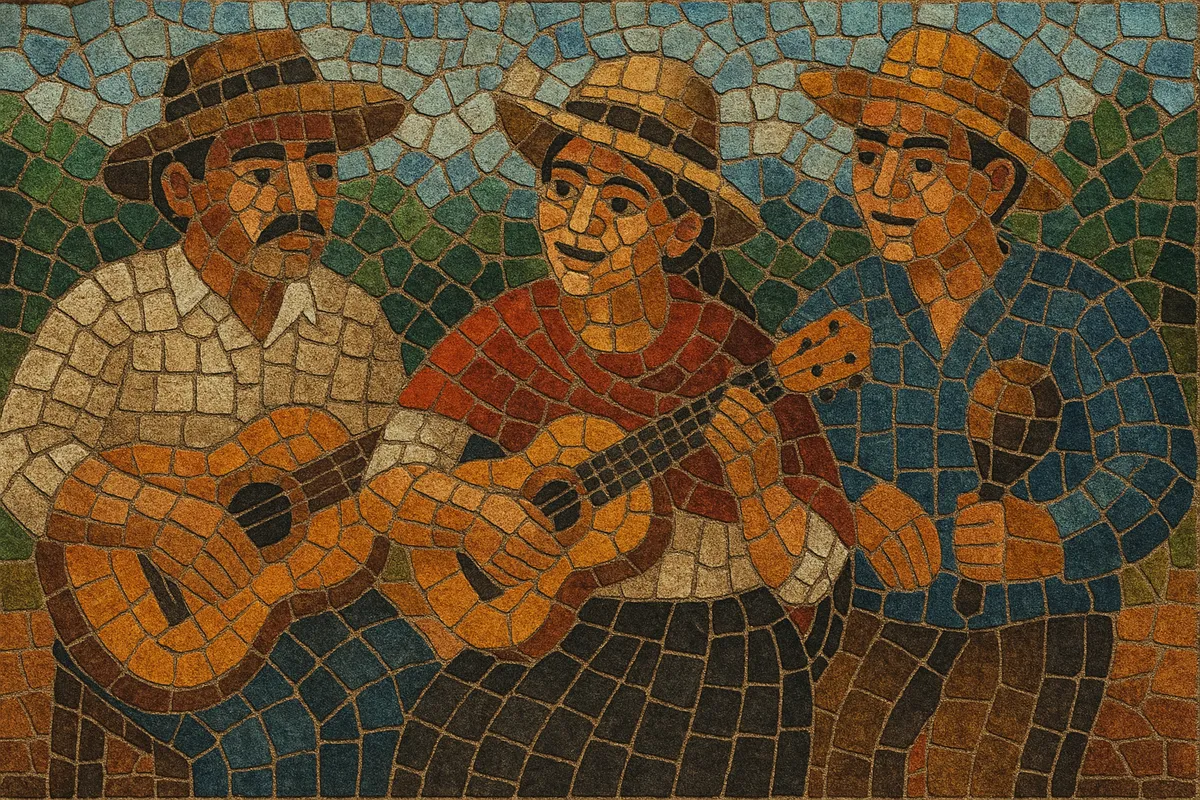Carranga (música carranguera) is a rural Andean folk style from the highland departments of Boyacá and Santander in Colombia.
It is characterized by bright, strummed string textures, humorous and satirical lyrics about peasant life, and danceable rhythms derived from traditional Colombian Andean forms.
Typical ensembles feature the Colombian tiple, guitar, requinto (small lead guitar), and light hand percussion (guache/shakers, maracas), producing a lively, rustic timbre.
Harmonies are usually simple (major key I–IV–V with occasional secondary dominants) and melodies are syllabic and catchy, inviting communal singing and dancing.
Carranga emerged in the late 1970s from the Colombian Andean interior, particularly Boyacá and Santander. Drawing on older regional dance-song forms (torbellino, guabina, bambuco, and pasillo), rural musicians codified a modern, humorous, and highly participatory style centered on the Colombian tiple and small string ensembles.
Veterinarian-turned-musician Jorge Velosa, with Los Carrangueros de Ráquira, brought the genre to national prominence through radio, television, and extensive touring. Songs such as “La cucharita” became emblematic, presenting witty snapshots of campesino life, love, and everyday mishaps. The group’s success helped reposition rural Andean folklore within mainstream Colombian culture.
Carranga became a festive staple at local fiestas and national folkloric festivals, retaining its peasant identity while being embraced by urban audiences. Its straightforward harmonies and acoustic sound made it accessible for school ensembles and community groups, leading to intergenerational transmission.
A new wave of artists fused carranga with rock, indie folk, and alternative aesthetics, popularizing “carranga rock.” Bands like Los Rolling Ruanas and Velo de Oza, and the experimental work of Edson Velandia (Velandia y La Tigra), introduced amplified timbres, drum kits, and modern songwriting while keeping the rhythmic feel and earthy wit of the original style.


